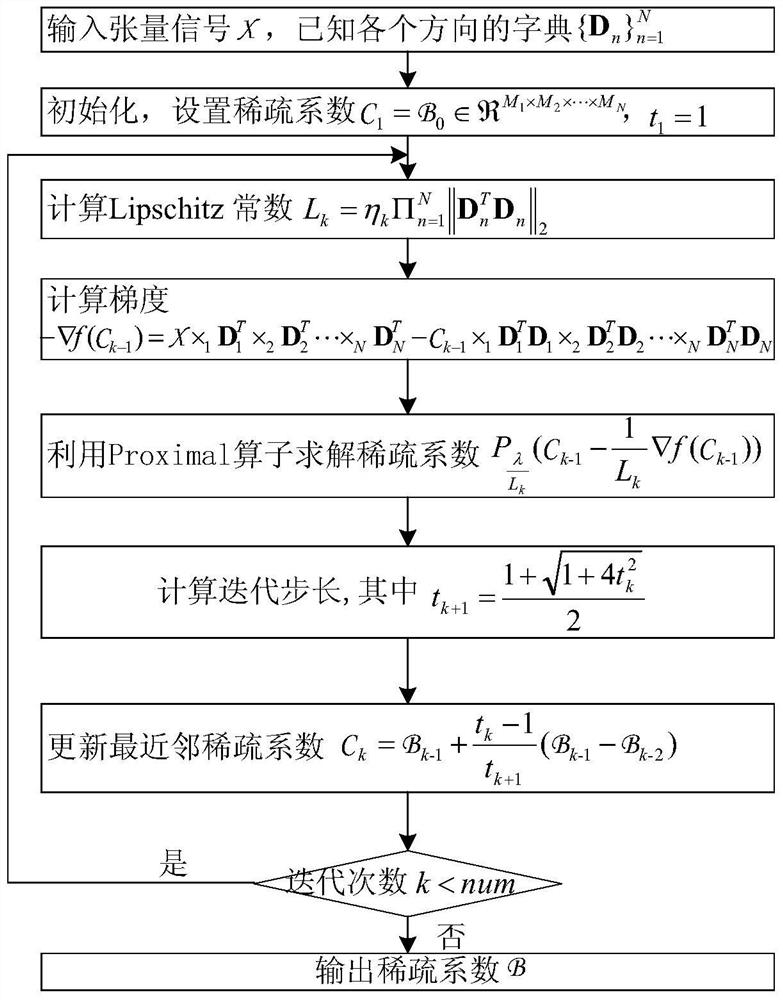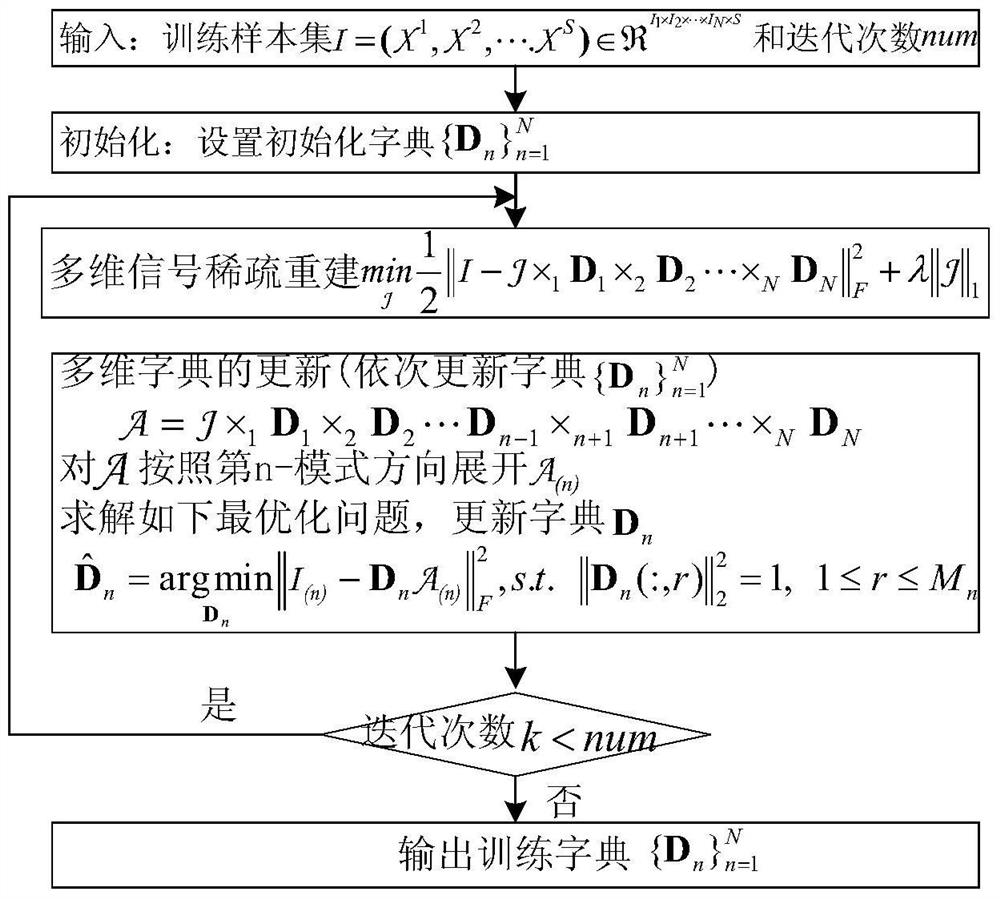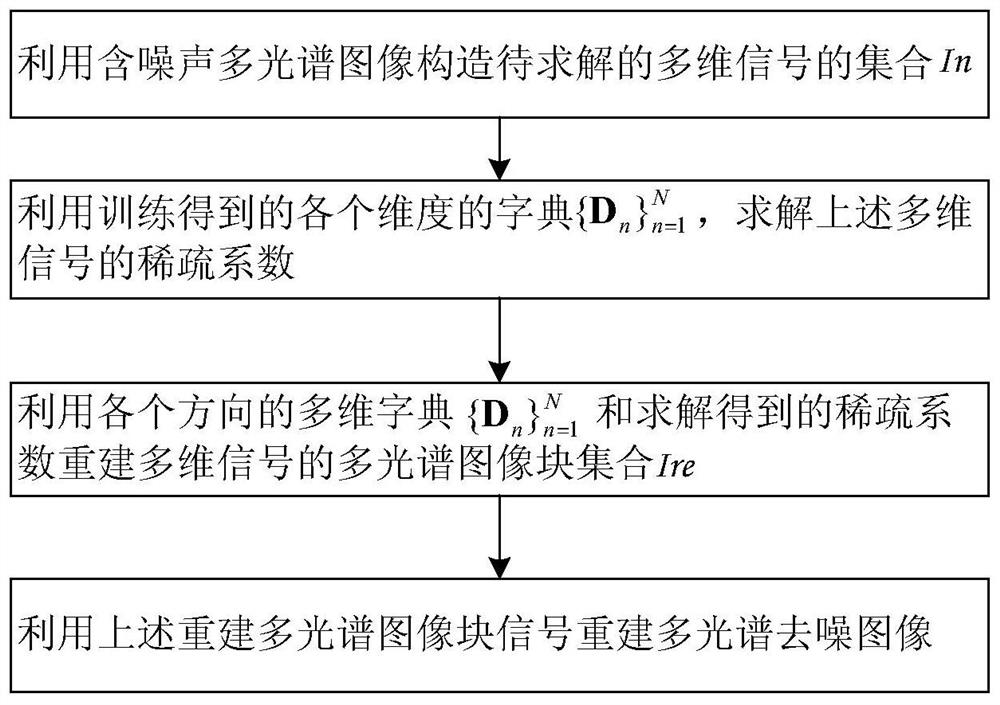A sparse model, reconstruction method and dictionary training method for multidimensional signals
A dictionary training and sparse reconstruction technology, applied in the fields of sparse reconstruction and dictionary training of sparse representation, can solve the problems of sparse representation model describing tensors, algorithm complexity and storage space contradiction, and reduce algorithm complexity and storage space. , the effect of reducing the complexity of the algorithm
- Summary
- Abstract
- Description
- Claims
- Application Information
AI Technical Summary
Problems solved by technology
Method used
Image
Examples
Embodiment Construction
[0024] The sparse model of this multi-dimensional signal is formula (1)
[0025]
[0026] where the tensor Represented as an N-dimensional sparse tensor with a series of sparse dictionaries The tensor product of I n ≤M n ,D n Defined as a dictionary in the nth direction, K is the degree of sparsity, used to describe the sparse coefficient The number of non-zero elements in .
[0027] Preferably, given a sparse dictionary The corresponding sparse model is formula (2)
[0028]
[0029] Among them, λ is used to balance fidelity and sparsity.
[0030] Preferably, the conversion to l by relaxation 1 Constrained convex programming problem, the corresponding sparse model is formula (3)
[0031]
[0032] Also provided is a method for reconstructing a sparse model of a multidimensional signal, which is an iterative shrinkage threshold method TISTA based on tensors (such as figure 1 shown), formulas (10), (11) are obtained for formulas (3) and (2)
[0033]
...
PUM
 Login to View More
Login to View More Abstract
Description
Claims
Application Information
 Login to View More
Login to View More - R&D
- Intellectual Property
- Life Sciences
- Materials
- Tech Scout
- Unparalleled Data Quality
- Higher Quality Content
- 60% Fewer Hallucinations
Browse by: Latest US Patents, China's latest patents, Technical Efficacy Thesaurus, Application Domain, Technology Topic, Popular Technical Reports.
© 2025 PatSnap. All rights reserved.Legal|Privacy policy|Modern Slavery Act Transparency Statement|Sitemap|About US| Contact US: help@patsnap.com



